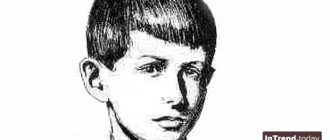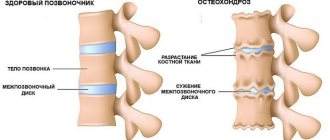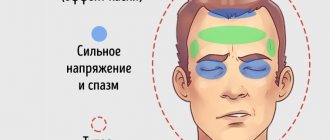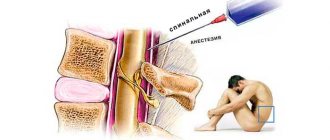Among human diseases, brain diseases remain among the most difficult to cure, and some are still a death sentence.
The brain is so complex that understanding all the principles of its work, much less trying to interfere with it, is an extremely difficult task. However, there are some successes in modern medicine, and timely diagnosed brain diseases can often be, if not cured, then at least significantly slowed down.
If you try to list brain diseases, the list will be quite long. But if the functioning of the brain is disrupted, this entails a clear deterioration in the functioning of other systems.
The brain is responsible for processing all sensory information, coordination of movements, and the ability to cooperate with the environment and society. The bone marrow generates white blood cells, platelets, lymphocytes, basophils, granulocytes and red blood cells - cells that help protect the body from infections, supply the blood with oxygen and allow it to clot, thereby healing wounds.
Can a person exist if such functions are impaired?
Diseases associated with the brain require careful attention from specialists, serious laboratory and radiation research methods, and strict adherence by the patient to all recommendations of the attending physician.
Brain diseases
The list of brain diseases is impressive. Here are just the most common ones:
Alzheimer's disease.
In fact, this disease is a variant of self-destruction of the body, which begins to produce protein with unnatural properties. The protein is deposited directly in the brain tissue in remarkable plaques, the presence of which determines the diagnosis. Atrophy of nerve cells develops, during which the body gradually ceases to function normally and dies.
Medicines provide only a temporary respite, and the reasons for this failure have not yet been established.
Stroke was previously considered a disease of older people.
Today he is strikingly younger, striking at the age of 20-30 years.
The essence of this brain disease is circulatory disorders. There are two types, ischemic and hemorrhagic, depending on the cause of the manifestation. Ischemic stroke occurs more often at night; it is characterized by disturbances in the blood supply to part of the brain or its complete cessation. During sleep, a part of the body may become numb and problems with speech may appear, or the patient may not be able to speak at all. In addition, it is accompanied by cerebral infarction, which softens the tissue. G
Hemorrhagic is provoked through serious stressful situations. Occurs during the day, often paralyzes one side of the limb, convulsions or vomiting begin, speech functions deteriorate, and there may be loss of consciousness.
The first signs of both options are tinnitus, general weakness, and complaints of heaviness in the head. Treatment and recovery are lengthy and depend on the type of stroke.
Tumor.
Neoplasms can be malignant or benign, but they still cause increased intracranial pressure.
Symptoms are headache, vomiting, disturbances in thinking and memory.
If in the early stages a positive prognosis is possible due to successful surgical intervention, then advanced cases are not treated.
Epilepsy.
It has many forms, always chronic. The reason is failures in the bioelectrical function of the brain. The problems may affect part of the brain or all of it. Age does not matter, it can occur in children, and the causes of childhood morbidity have not been established. For adults, one option is called alcoholism.
The disease manifests itself in two variants: generalized and local.
- In the first case, both hemispheres are involved. Most often, a large convulsive is observed, in which the patient not only loses consciousness, but also loses tonic tension. For the first minute, the body arches, the head falls back, breathing stops, and the skin turns blue. Then breathing appears along with convulsions, control over the body is completely lost, involuntary urination or tongue biting may occur. After a seizure, a person feels very tired.
The atonic variety consists of a sharp decrease in muscle tone, after which the person simply falls. Seizures in children are characterized by “freezing,” when the gaze freezes, the eyelids twitch, and the child is disconnected from the world around him.
- Local ones can be simple, with convulsions, trembling, numbness and loss of sensation in different parts of the body. Complex ones are characterized by hallucinations, nervousness, and loss of contact with the outside world.
In order to reduce the likelihood of relapse, you need to protect the patient from stress, including sudden noise or light, and avoid alcohol. Maintenance drug treatment is prescribed.
The list of brain diseases can go on for a long time, but each of them seriously affects the patient’s health and can lead to irreparable consequences.
Causes
Most often, infectious pain syndromes are moderate and localized in the area of the eyebrows, temples and the frontal part of the head. They are treated with conventional antipyretics.
Infectious diseases provoke pain mainly in the forehead and usually aching with a feeling of heaviness. This kind of symptomatology cannot be ignored, as it may signal the presence of meningococcal infection.
Among the most dangerous forms of this disease, it is worth noting meningococcal meningitis (damage to the membranes of the brain), meningococcemia (ingress of microorganisms into the blood). In such situations, headache is the main and alarming symptom.
It is important to understand that meningococcal infection is dangerous for humans, as it can cause death in just a few hours. Therefore, timely diagnosis will allow choosing effective treatment.
For example, dengue fever is accompanied by pain syndromes, especially retro-orbital headaches with unpleasant sensations in the muscles and joints. As a result, the patient is unable to bend his legs normally when walking, and a peculiar gait appears (the gait of a dandy or dandy).
It is worth noting another condition with dengue fever - a hyperemic and puffy face, hemorrhagic rash, injected sclera. Pain in muscles and joints along with headaches are observed from 3 to 8 weeks. The danger of an infectious type can be recognized if the symptoms are combined with impaired consciousness, neck pain (it is very difficult to lift your head from the pillow), ineffectiveness of painkillers, severe vomiting, and a dark red rash.
If such symptoms are visualized, it is important to immediately consult your doctor for diagnosis and treatment. Diagnostic testing may include MRI, various blood tests, urinalysis, etc. Headaches are a common symptom in the presence of infectious diseases.
Bone marrow diseases
Spinal cord diseases affect the production of stem cells and their further differentiation.
The following violations occur:
- The balance in the production of cells of different types is disturbed, with excessive amounts of some being produced and not enough of others.
- Extension of life of one type of cell is greater than normal.
- The cells produced are not fully functional.
- The cells have abnormal properties.
Due to this, the functions of the body are seriously impaired. The most common diseases of the spinal cord are:
Leukemia.
An excess of white blood cells, the functionality of which is impaired, leads to a decrease in the number of other types of cells and the body's inability to fight infections.
As a result, patients often suffer from all sorts of infections, are prone to bleeding, bruises are observed on the skin, tests show anemia of varying degrees. Lymph nodes and spleen enlarge.
Treatment consists of 2 stages. At first, doctors must achieve stable remission. In this case, a bone marrow transplant will be needed in the future. Operations are performed only up to the age of 50; by this age the body no longer has a chance of recovery. Moreover, we are talking about acute leukemia.
The chronic form cannot be treated; it makes sense only in maintenance therapy, which maintains the body’s strength for some time (up to 15 years).
Myeloma.
It occurs more often in older people until they cross the age threshold of 40 years. In fact, it is a cancerous disease, which is divided depending on the causes and manifestations of the disease.
Myelodysplastic syndrome produces cells with abnormal functions. Normal cells are in short supply and patients are susceptible to infections, bleeding and anemia.
Myeloproliferative syndrome is characterized by increased production of immature cells that become nonfunctional cells.
Anemia.
May be aplastic and iron deficiency. The first occurs as a result of suppression of productive processes in the bone marrow. Occurs as a result of chemical or radiation exposure, due to genetic factors or previous exposure to a severe viral infection.
Iron deficiency anemia is a disease in which the bone marrow produces red blood cells with reduced functionality. Occurs when there is a small amount of erythropoietin or its dysfunction.
Bone marrow diseases are so diverse in their manifestations that hematologists develop treatment regimens individually for each patient.
Origin and treatment
Progressive FGM
Incidence in Africa. More details:
The picture tells us about female circumcision. Which, however, does not change the essence of the matter, since it is slightly less than in all cases due to the fault of FGM and its particular manifestations (such as Islam of the brain). It is logical to assume that in this way the map displays the minimum number of FGM patients per unit area. It is characteristic that the largest number of patients are in Somalia and Sudan, where anarchic fuckery has reigned for many decades
During the heyday of Kashchenka, its population was traditionally divided into doctors and pots-i-ents. Since the latter, in order to justify their status, had to suffer some kind of sorrow, FGM was quickly invented.
The origin of this term comes from a real disease called phimosis - a situation in which, due to an excessively rigid and inextensible foreskin, it is impossible to expose the head of the male penis, and which is treated by circumcision.
Phimosis of the brain, by analogy, began to be considered synonymous with extreme dullness and narrow-mindedness of the patient. FGM is characterized by damage to the cortex and wood of the brain (hereinafter referred to as the “phimbrain” or “interauricular ganglion”) with progressive blockage of thought pathways, an increase in the patient’s aggressiveness, as well as a catastrophic decrease in the ability to absorb information and general mental abilities. In other words, FGM is a chronic inability to use brain resources for their intended purpose. From this, in particular, it follows that high knowledge and the presence of great knowledge in various fields do not in any way guarantee the absence of FGM. As an analogy: even the most modern and sophisticated computer with a large set of software is useless while it is turned off.
The symptom complex also includes: complete rejection of criticism of one’s activities, erudition on any issue, ignoring facts that do not fit into one’s own picture of the world, attaching labels that often do not correspond to reality. The prognosis for life is favorable, but for recovery it is doubtful.
It is generally accepted that FGM is an incurable disease, therefore the only method of treating it is considered to be the use of 5 to 10 cubes of life-giving euthanasia intravenously or intravenously. An alternative to such treatment is to incense the patient, after which he stops suffering from his illness and begins to enjoy it.
Alternatively, traditional medicine suggests cutting your hands as a symptomatic treatment. True, this will not help FGM, but the patient will definitely stop rambling on forums, chats and blogs. Well then...
In advanced cases, FGM turns into boclanopotstitis.
Symptoms of brain diseases
Symptoms of brain disease are varied and depend on the disease, its type, stage and condition of the human body.
In addition, they are different for the spinal cord and brain.
Symptoms of brain disease:
- Frequent headaches.
- Nervousness, frequent mood swings.
- Personality and behavioral changes.
- General weakness.
- Problems with sensory cognition of the world.
- Lack of appetite.
- Absent-mindedness.
- Convulsions, numbness or paralysis of body parts.
- Confused thoughts.
- Coma.
Symptoms of human brain disease often accompany other diseases, and only after a thorough examination can doctors make the correct diagnosis. Before its manifestation, we are talking only about a preliminary diagnosis.
Symptoms of spinal cord diseases:
- Temperature is above normal.
- Chills and/or sweating.
- Itching.
- Sudden weight changes.
My favourite actor…
He was 47. He did not finish his last performance, collapsing on stage, and died two days later in the hospital. From a ruptured aneurysm and extensive hemorrhage in the brain. When Andrei was taken from Riga to Moscow to be buried, the entire path of the funeral cortege was covered with flowers by the artist’s mourning fans... Hello, friends! I will talk about how dangerous cerebrovascular disease is, the symptoms of which we often do not take seriously. Headache, malaise - it seems that everything can be endured. But isn't it better to prevent?
Preventive measures
Since for many brain diseases the mechanisms that trigger the disease have not been found, there is no point in talking about preventive measures as a panacea for problems. Doctors talk about proper nutrition and a healthy lifestyle.
Indeed, for some diseases these measures may be sufficient; their importance cannot be denied. But among the important points should be contacting a doctor if any of the previously listed symptoms begin to occur.
A neurologist if brain disease is suspected and hematologists if there is a possibility of bone marrow manifestations. It is worth remembering that an accurate diagnosis without an examination is impossible, and a routine examination by a local doctor will not be able to determine the real cause of the ailment.
Diagnosis of vascular diseases
Popular diagnostic methods include ultrasound examination of arteries, magnetic resonance imaging, and neurological studies.
It is possible to determine the subtleties of the development of neurological diseases using modern methods (tomography with radionuclides, spectroscopy, positron tomography, duplex scan, thermal imaging, etc.).
After examining and questioning the patient, palpation, percussion and auscultation, the doctor prescribes laboratory and instrumental tests to clarify the diagnosis and draw up the correct treatment regimen.
Basic diagnostic methods:
- Clinical blood test - the presence of inflammatory processes in the vessels is indicated by an increase in ESR.
- General urine test - the level of LDH is important; an increase in the urine of this substance indicates an ischemic heart attack.
- Biochemical blood test - shows cholesterol level; in men, the values should be in the range of 5.9–6.5 mmol/l, in women - no more than 5.2 units. You should take the test only on an empty stomach; your last meal should be 10 hours before the test.
- Immunological test to detect lipoproteins in the blood.
- Coagulogram - allows you to determine how the process of blood clotting occurs in the body.
- Vascular angiography – contrast x-ray. Used to detect pathological changes in the vessels of the heart, legs, and brain. The method is informative, but has many contraindications and requires special training in a hospital setting.
- Angiography – using a tomograph, the condition of blood vessels in the heart, neck, abdominal region, and brain is studied.
- Ultrasound (Dopplerography) - allows you to see the presence of cholesterol plaques and their location.
- An MRI method will help identify vascular abnormalities and the degree of narrowing of blood vessels.
- Vascular RVG - this method allows you to see how blood circulates in the arms and legs, and assess the tone of blood vessels in the extremities.
- Rheoencephalogram - using REG, the level of vascular response is checked.
Vascular diseases never manifest themselves as a separate pathology - they are always closely related to any malfunctions in the body.
A blood test will show the condition of the blood vessels
Main types of human prion diseases
The list of nosological forms provoked by abnormal proteins is gradually updated. Scientists have identified the following diseases in humans:
- Kuru;
- Gerstmann-Straussler-Scheinker;
- Creutzfeld-Jacobs;
- Fatal familial insomnia (insomnia);
- Alper's disease (spongiosal encephalopathy).
List of animal prion diseases:
- Transmissible encephalopathy of minks;
- Scrapie;
- Debilitating chronic nosology of moose and deer;
- Bovine spongiform encephalopathy;
- Feline encephalopathy;
- Spongiform brain damage to the greater kudu, antelope, and exotic ungulates.
Changes in the amino acid structure of prion proteins (PrP) cause an increase in protein size, which contributes to amyloid dystrophy with destruction of the cerebral structure.
The pathogenesis of nosology requires taking into account the species barrier. Research has revealed the occurrence of pathology in giraffes and monkeys that were in captivity and fed on the milk of goats and sheep. There is information about facts of violation of the interspecies barrier.
The mechanisms of development of the disease are explained by two links:
- Ingestion of Prp with a different structure from the body’s own substance;
- Overcoming the species barrier by animal proteins that humans eat.
Enhancing cerebral threshold transmittance between human PRP and bovine counterparts. The mechanism, theoretically, creates the possibility of overcoming the species barrier.
The histological properties of the species protein of mink encephalopathy with scrapie (carrier - sheep) were confirmed.
The possibility of transmitting the pathogen from sick people to healthy people after blood transfusion remains possible. There are cases of infection among the tribal population of Papua New Guinea, who engage in cannibalism. Eating human brains led to the development of the disease.
After entering the body, the prion acquires the ability to reproduce. The forms are resistant to many environmental influences - ultraviolet irradiation, canning, boiling.
Features of Creutzfeldt-Jakob disease
Nosology progresses quickly. Accompanied by muscle twitching, dementia, and mental disorders. Clinical symptoms develop sequentially. At the beginning of development, local muscle cramps can be observed. The increase in myoclonus of different muscle groups excludes the possibility of independent maintenance. The extreme stage of the nosological form is coma. On average, a year passes from the onset of cerebral changes to death.
Classification of Creutzfeldt disease by causes:
- Atypical form – when consuming meat from cattle with rabies;
- Iatrogenic – after the administration of certain drugs containing animal PrP (insulin, vaccines);
- Hereditary – genetic tendency to reproduce human prion proteins;
- Classic (sporadic) - in old age after 50-55 years.
Sporadic head start is the most common type of nosology. The active development of pathology was observed in the last century after the mad cow disease epidemic. Modern trends determine the “rejuvenation” of nosology. The frequency of nosology is on average one case per million people. Clinical symptoms arise gradually with a predominance of mental or neurological disorders.
Early signs:
- Sleep disturbance;
- Dizziness;
- Fatigue;
- Increased weakness;
- Decreased appetite.
After a few months, emotional instability develops (alternating excitement with depression), loss of sexual desire, insomnia, visual disturbances, and delusional-hallucinatory syndrome.
Manifestations of sporadic neurological disorders:
- Convulsive syndrome;
- Loss of coordination;
- Loss of speech;
- Decreased muscle tone with periods of myoclonus.
The final stage is a disorder of the innervation of the pelvic organs, complete immobility, coma. The mortality rate is one hundred percent. Only the timing of the onset of pathology differs.
The familial form is transmitted by an autosomal dominant mechanism. Characterized by abnormalities of the twentieth chromosome. Appears earlier than its sporadic counterpart. Clinical symptoms are similar to the previous type.
The new iatrogenic Creutzfeldt-Jakob variant has been little studied. Proving the likelihood of infection during medical intervention is difficult. The possibility of infection after installation of an artificial lens, restoration of the dura mater, and cornea has been experimentally proven.
The duration of the incubation period is up to twelve years. Clinical symptoms appear earlier after medical intervention directly on the brain.
Prion diseases can occur after the administration of human gonadotropin and other hormones. The ingress of a foreign protein causes the substance to multiply.
The iatrogenic form is accompanied by a predominance of neurological disorders over mental manifestations. The nosology is accompanied by a number of clinical signs:
- Myoclonus;
- Cerebellar ataxia;
- Pathology of muscle tone;
- Dementia (dementia).
The maximum survival rate for people with mad cow disease is two years. The first manifestations of pathology can be traced after 30 years.
Peculiarities of symptoms of Gerstmann-Straussler-Scheinker disease
Nosology has an acquired course. A mutation in the prion protein occurs due to a gene abnormality. It is transmitted in an autosomal dominant manner. Occurs rarely. The frequency is one person in ten million. The average age is forty years.
Early signs of Gerstmann-Straussler disease:
- Dizziness;
- Cerebellar disorders;
- Coordination problems;
- Pathology of muscle tone;
- Decreased vision;
- Gaze paresis;
- Deafness;
- Swallowing reflex disorders.
Maximum life expectancy is up to ten years.
The late stage is accompanied by severe dementia and the development of epileptic seizures.
Symptoms of Kuru disease
The pathology is found in residents of Papua New Guinea, where cannibalism is common. Prion diseases occur after the consumption of meninges, white matter. The ingestion of foreign proteins leads to symptoms:
- Severe muscle tremors;
- Cerebellar incoordination;
- A daring smile;
- Head twitching.
Dementia is not characteristic of Kuru disease.
Spongy progressive Alper's encephalopathy of childhood
The average age of development of nosology is eighteen years. It is transmitted in an autosomal recessive manner. It occurs when a child has two abnormal genes from his mother and father. The cause of death from Alper spongy encephalopathy is cirrhosis of the liver. First, chronic hepatitis appears, in which liver defects are overgrown with non-functional scar tissue.
Concomitant neurological signs of childhood encephalopathy:
- Epileptic seizures;
- Vision disorders;
- Strokes.
The disease is one of the early forms of prion nosology.
Features of familial fatal insomnia
Hereditary transmission is due to an autosomal dominant mechanism. Mutation of the prion protein causes constant insomnia, other neurological signs:
- Increased heart rate;
- Increased blood pressure;
- Loss of attention and memory;
- Visual hallucinations;
- Muscle twitching;
- Tremor of the limbs;
- Hallucinosis;
- Psychoses.
Death occurs not so much from brain damage as from lack of sleep.











